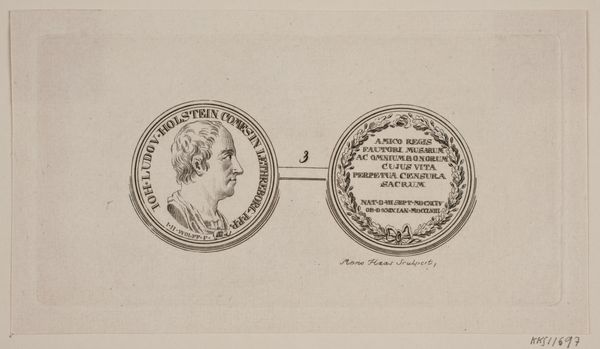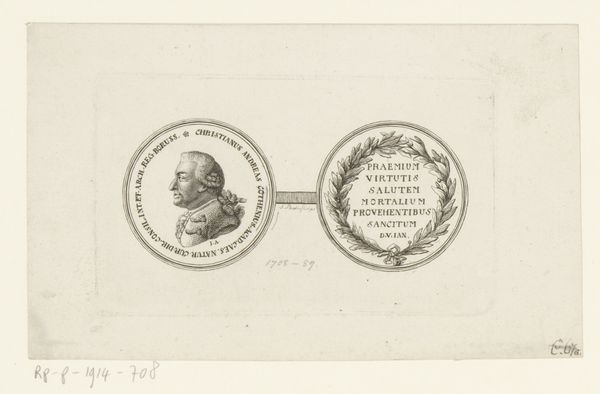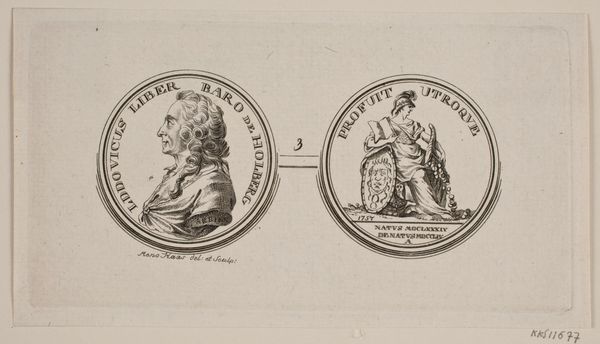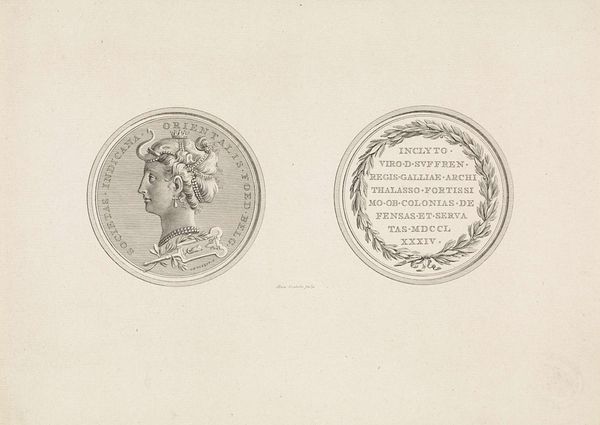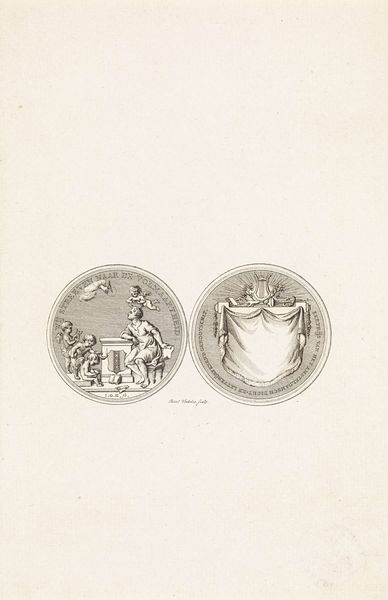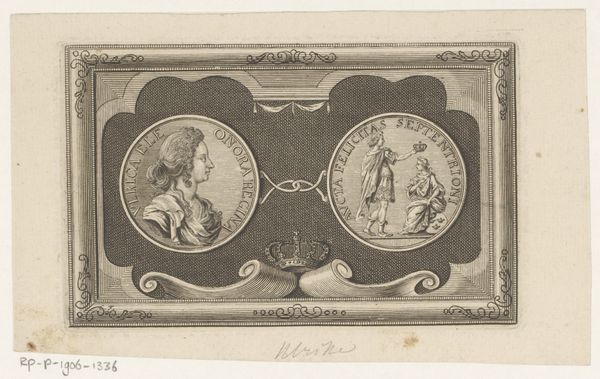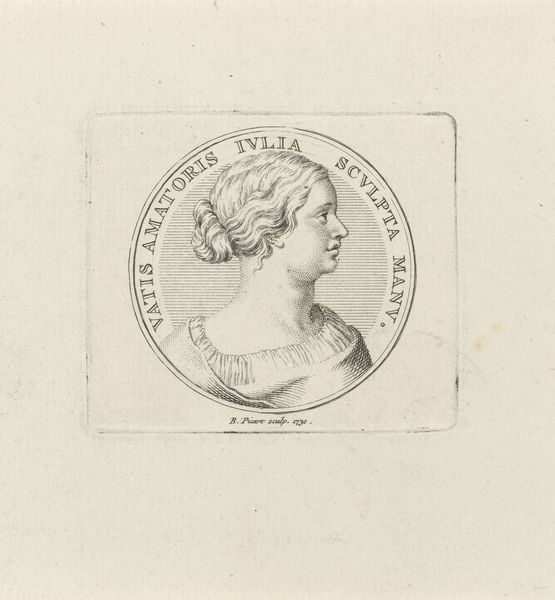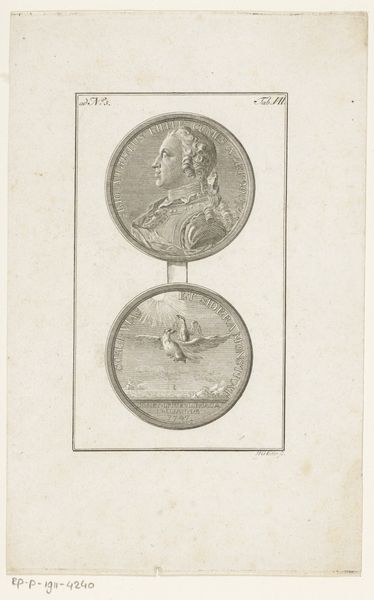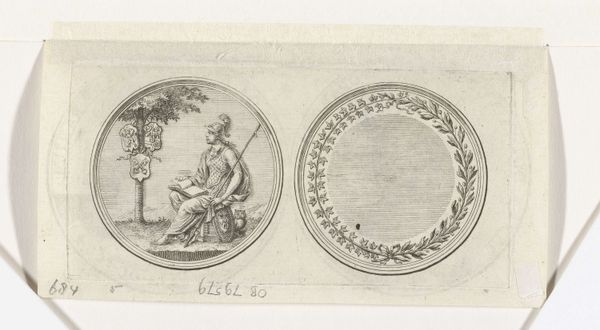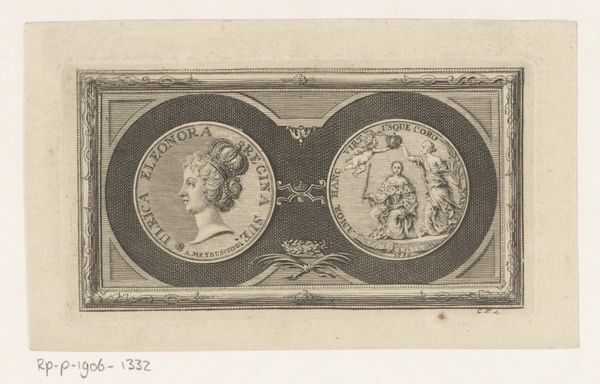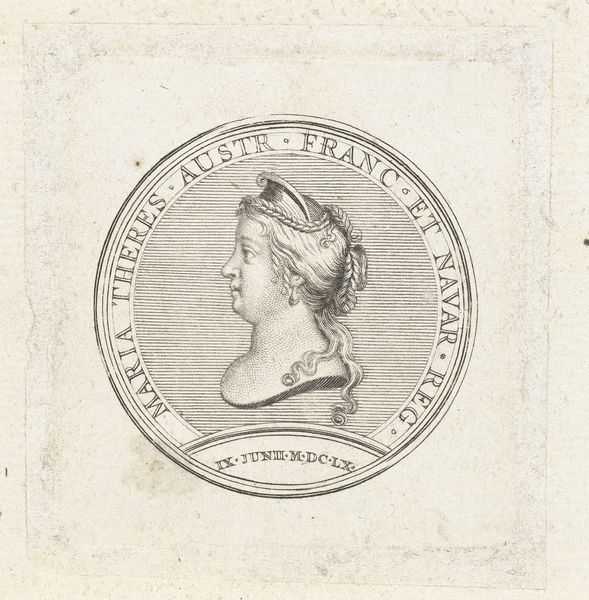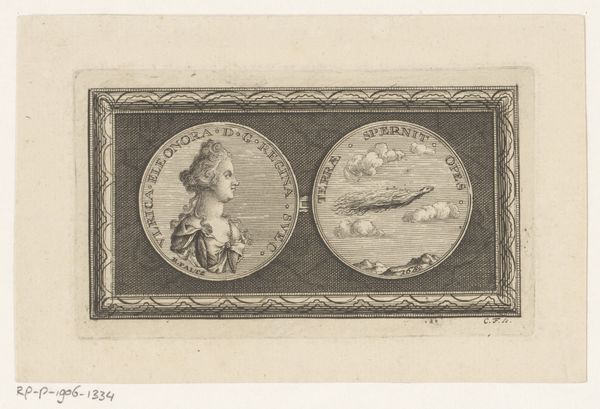
Dimensions: 77 mm (height) x 148 mm (width) (Plademål)
Curator: This engraving, titled "Medaille. Carl Marcus Tuscher," was created by Meno Haas sometime between 1752 and 1833. I find the contrast between the meticulous detail of the engraving and the symbolic, almost cryptic, nature of the imagery quite captivating. What's your initial impression? Editor: Stark! Almost clinical. Those twin medallions feel… constrained, despite all the baroque swirls. Like a formal dance viewed under a microscope. There’s a stiffness I can’t quite shake off. Curator: That’s a keen observation. Let’s unpack it a little. On one side, we have a portrait of Carl Marcus Tuscher, quite proper in profile. On the other side is an owl—rather puffed up, perched precariously, wouldn't you say?—with inscrutable text. The line connecting the two reads simply, "2." What story do you think Haas is trying to weave with this rather unorthodox juxtaposition? Editor: The owl looks like it has important business. Almost stern. Maybe Tuscher was an academic, or some kind of learned person, wisdom his familiar? But "2," just floating there? A duet of stoicism perhaps? Or could it signify a second act in Tuscher's life—a rebirth of sorts—symbolized by the wise owl? The symbolism's intriguing, even though the presentation strikes me as rigid. Curator: Perhaps. And speaking of form, the engraver's skill is evident in the precision of the lines. The subtle gradations in tone achieved solely through varying line weight create an almost sculptural effect, especially on the portrait medallion. I think the circular composition, the clean lines, add to the timeless and noble aspect of the print. It feels eternal. Editor: While technically impressive, the lack of dramatic contrast bothers me, even knowing this is engraving. All the symbolism and talent almost feels wasted on the visual evenness; emotionally the engraving feels quite closed off. It does however encourage me to lean into all the minuscule details which definitely rewards patience and close observation. Curator: I see your point. Perhaps it's a reflection of the era’s aesthetic sensibilities—a striving for order and clarity within the confines of tradition. It makes me want to delve deeper into Haas’s techniques. Thank you. Editor: Thanks for shining light into the past, every work really contains a microcosm of a cultural landscape!
Comments
No comments
Be the first to comment and join the conversation on the ultimate creative platform.
